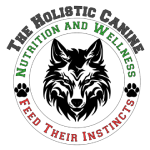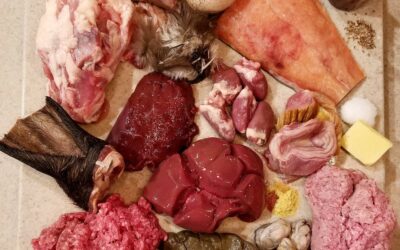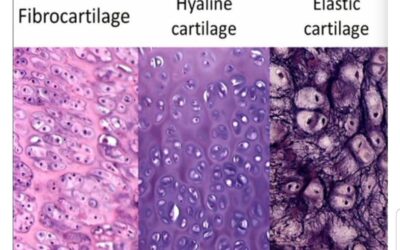Grains
Let’s talk grains. Grains are grass seeds. They differ from other seeds in that grains do not “go to” fruit, vegetable, or flower such as pumpkin seeds, apricot kernels, and sunflower seeds that are commonly consumed as foods. (Nuts and beans are also considered seeds.) The most commonly consumed grains are wheat, rice, oats, barley, rye, corn and the pseudo-grain quinoa which have been at the forefront of the canine nutrition debate for decades. Grains have been used in commercial dog foods since the dawn of James Spratt’s dog cakes in 1870 and F.H. Bennett Biscuits Co.’s bone shaped ‘Milk-Bone’ dog biscuits in 1907. Since that time, the health of our dogs has declined right along with that of man’s, and this just so happens to parallel the rise in grain consumption. We can see that the modern canine has developed the very same chronic conditions, obesity, and diet-induced diseases and cancers as his fellow man. While we certainly cannot blame the decline in health entirely on the consumption of grains, we do need to ask, should grains continue to be used as a dietary option in canine nutrition? After all, the grain-free dog food craze has boomed. Since FirstMate introduced the very first grain-free commercial feed option in 1995, nearly every other pet food company has followed suit and their sales have exploded. However, since kibble requires something to hold it together and boost protein percentages, the pet food industry simply swapped out the grains for legumes, peas, and potatoes. Are these better alternatives? Sadly, it doesn’t appear that way. As if the health crisis of the modern canine could not get any worse, the grain-free alternatives have appeared to have contributed to another threat to dogs known as dilated cardiomyopathy (DCM). As a result, nutritionally uninformed veterinarians are warning pet parents to go back to feeding grain inclusive foods. Thus, feeding grains to dogs is being revisited in a big way; and in my opinion, the wrong way. Let’s take a look.
I discussed canine anatomy and physiology in Part I of this series. Clearly, dogs are not designed to consume grains. You may be surprised to learn, neither are nearly all the herbivores or mammals for that matter. One common example is the feeding of grains to ungulates which are designed to graze and forage. Feeding grains are, unfortunately, a cheaper way to supply the volumes of food that these animals require to meet the demands of consumers for their meat and milk products. But at what cost? The nutritionally-lacking final food products are evidence enough. But like dogs fed foods that are not species-appropriate, feeding grains to animals not designed to properly digest them results in poorer health and disease, and more often than not, the reliance on drugs to prevent them from succumbing to illness. Simply because we can offer grains to dogs and many farm animals without immediate life-threatening consequences does not mean that this equates to an adequate substitute for those foods that the animals are designed to consume. Species-appropriate foods create and cultivate optimal health, something grains are clearly not noted for. The fact of the matter is grains are only species-appropriate to granivores, and granivores are birds.
Birds are anatomically and physiologically equipped to consume grains. They contain a crop and a gizzard which allows them to safely and adequately digest grains. The crop is in the throat where grains and seeds can germinate before entering the two-chamber stomach. The first chamber of the stomach is like ours. The second chamber, however, is the gizzard which holds grit, stone, and sand picked up with food the birds eat from the ground. The grit is held in the gizzard where it is ground into the grains and seeds by the strong muscular contractions of the gizzard wall. This breaks down the grains and unlocks nutrients. In a nut shell (no pun intended), grains are for the birds…period. But what is it that makes grains so contrary to those species-appropriate foods that do cultivate and sustain health? I am glad you asked.
Grains, as noted above, are grass seeds that contain anti-predation proteins (anti-nutrient chemicals) including lectins, phytic acid (phytates), enzyme inhibitors, cyanide, and prolamins. Some of these chemicals are bitter tasting (as many of us have experienced). In fact, grains in their natural raw state are actually quite toxic. Grains are not meant to be eaten; rather their purpose is to fall to the ground and reproduce. Aside from the evidentiary chemicals produced by the plant, the physical indications also speak volumes. Grass seeds have hard outer shells as well as spikes, fuzz, and mucus and oil coatings. But for the sake of this article, it is the anti-nutrient chemicals that I am here most concerned with. These anti-nutrients serve the purposes of preventing predators from consuming them, preventing premature germination (sprouting) in the absence of adequate conditions for growth, and to protect them from the destructive acids and enzyme of the digestive process in order to preserve them for their true purpose: new life. The human and animal (except for birds) who consumes whole grains (grass seeds) also consumes these anti-nutrient chemicals. Anti-nutrients interfere with and inhibit mineral absorption in the gut, inhibit the pancreatic enzymes from adequately digesting food, irritate the immune system, and irritate the gut lining creating an inflammatory environment. The inflammation causes the intestinal wall to produce an abundance of mucus (you will often see this in your dog’s stools) which further reduces nutrient absorption in the small intestine. Add to this the fact that parasites (intestinal worms) typically consume mucus, one reason we commonly see grain-laden kibble-fed dogs regularly needing preventative chemical worming protocols. Thus, it is clearly apparent why the consumption of grains is posing a major health threat to not just our dogs, but also to people who consume them and grain-fed farm animals.
It can be argued that people and animals have been consuming grains for a very long time. And while this is true, a simple research of historical records will show the unfortunate decline in the health of humans and animals following the advent of grain-cultivating agriculture. Malnutrition and infectious disease were the major consequences of grain consumption. Of the studies that do show a possible positive link to grain consumption, the fact is that these studies were observational only and cannot prove that whole grains caused a reduction in disease risk. In fact, the opposite shows more prominently: disease-risk increased. Post-Industrial Revolution and the mass production of grains and grain-based foods brought with it the rapid ascension of chronic disease and cancer in humans, livestock, and pets. Despite the fact that grains were prepared and consumed much differently in the past than they are in this technologically advanced world, grains were not then nor are now an adequate food source as indicated, for one, by the anti-predation measures grasses have adapted and the decline in health that followed. Add to this the high carbohydrate and fiber content and you have another major issue for a carnivore.
Understand, firstly, that both whole grains (containing the bran, endosperm, and germ) and refined grains (endosperm only) come with risks. Whole grains come with the anti-predation chemicals along with the issues of the fiber. The bran is the outer layer on the endosperm and is composed of insoluble fiber. Especially in the carnivore, insoluble fibers from grains pose problems. Dogs do not have need for more than a small amount of fiber from foraging and the consumption of species-appropriate fur and feather fiber. Insoluble fiber from grains inhibits proper digestion and reduces nutrient absorption where it is already poor in the presence of the anti-nutrients. Even more, Dr. John Briffa, writing on human nutrition, expressed, “Do bear in mind though that insoluble fiber has been show to induce tiny rips and tears in the lining of the bowel. These will need repairing of course, requiring proliferation of cells. Uncontrolled cell proliferation, by the way, is the hallmark of cancerous tumors. While doctors, dieticians and cereal manufacturers often extol the virtues of bran, my opinion is that such foods should be flushed (straight) down the toilet.” Now take this information and apply this to a carnivore that should be consuming species-appropriate meats, organs, bones, and small amounts of vegetation. Imagine what grains are doing to a canine’s digestive system especially where they are a regular part of the diet. It is also possible that the high fiber coupled with the low-quality protein in commercially prepared foods may be implicated in the increased rate of heart disease in dogs. So, what happens if you remove the fiber-rich bran and the germ such as in the refining process of grains? You have nothing but low-nutrient carbohydrates. Colorado State University College of Veterinary Medicine’s Department of Oncology concluded that high carbohydrate diets create favorable conditions for the growth of tumors in dogs and cats, especially in those animals already fighting cancer. Their recommendation is a diet high in protein and fat which is exactly what carnivores should be consuming to begin with. Additionally, there exists the issue of glucose (sugar) spiking from the high carbohydrate content along with the greatly increased risk for obesity, diabetes, and all the chronic conditions that follow. The processed grain is no longer a whole food and lacks the partnering constituents to balance the carbohydrates that would reduce the increased risk for disease conditions. Thus, it matters not whether you feed whole grains or refined grains; the negatives of both far outweigh any benefits.
Since research on the negative value of grain consumption is fairly well-known, as well as the consequences experienced by countless people and animals, many health-savvy individuals have brought back some of the older methods of grain preparation to help make the consumption of grains safer and more beneficial. The Weston A. Price Foundation and many other nutrition professionals have published educational articles and videos on proper grain preparation techniques that serve to reduce and eliminate dangerous anti-nutrients; I happened to have been one of them. As a result, germinated, sprouted, and fermented grains have risen in popularity. Many of these health-savvy pet parents have also taken these measures to their dogs. But is there really any benefit in adding even sprouted and fermented grains to a dog’s diet? (Just to notate, both sprouting and fermenting would be necessary!) For one, grains must be heavily cooked to a near indistinguishable mush for a dog to even benefit slightly as a carnivore’s digestive tract can in no way break down unprocessed grains, period. Let’s consider the well-meaning pet parent who is feeding oatmeal, a grain which cannot be sprouted nor has been shown to benefit from soaking in an acid or fermented medium over-night prior to cooking. Grains contain the enzyme phytase that helps to breakdown the anti-nutrient phytic acid for the purpose of sprouting and growing into a new grass. However, phytase is heat sensitive and is destroyed easily by heat. Oatmeal (either rolled or instant) is a common addition to homemade dog food. In order to create oatmeal from whole grain oats, the oats are subjected to steam and then toasted or are precooked. The heat destroys the naturally-occurring phytase in the oats and therefore leaves the anti-nutrient phytic acid in the oatmeal. As a result, oatmeal does not benefit from presoaking even in an acid medium because there exists no phytase to “activate.” Oatmeal requires the addition of phytase or the homemade meal is sabotaged by the anti-nutrients. As noted above, the anti-predation chemicals in grains are meant to withstand the digestive tract in order to come out whole in feces for its purpose of creating new life. Unless the grains are sprouted or fermented before cooking, the anti-nutrients remain and will bind with minerals and pancreatic enzymes creating a possible mineral deficiency condition. And if this isn’t problematic enough, you must still contend with the lectin toxins and prolamin. Most lectins are proinflammatory, immunotoxic, neurotoxic, and cytotoxic. Some lectins may also increase blood viscosity, can interfere with gene expression, and act as endocrine disruptors. According to the world expert on plant anti-nutrients, Dr. Steven Gundry explains, “lectins are like little barnacles that look for specific sugar molecules in our blood, the lining of our gut, and on our nerves. When they find a good spot to land, they cling to those cells, breaking down their ability to communicate with our immune systems. Then, they literally tear open little holes between the cells that line our intestines. This perforation is the cause of Leaky Gut Syndrome, which we’re learning can cause a great deal of unpleasant symptoms and autoimmune issues or symptoms similar to those of food poisoning…. For the most part, grains are a relatively new food to us. Our hunter-gatherer ancestors didn’t search for grains. Plus, most grains are lectin bombs, as well as gluten-free grain substitutes. It’s best to limit grain intake. If you must, eat white flour over wheat.1” Reducing lectins requires sprouting, fermenting, and pressure cooking the grains. And finally, grains contain prolamins. Prolamins are known to be especially irritating to immune function. In the presence of these anti-nutrients, adequate mineral absorption and proper digestion is not possible. Adding grains are, therefore, counter-productive, not to mention time-consuming. Most of the time, the reason a pet parent is adding oatmeal or another grain is for the purpose of meeting one nutrient requirement such as magnesium. Going through the long and arduous preparation process just to hypothetically meet one nutrient requirement, while likely reducing the gut-absorption of calcium, magnesium, iron, and zinc, is anything but beneficial.
If you have read Part IV of this series, you will know that my highest nutrient per bite ratio recommendation would cancel out grains completely. Grains are not nutrient-saturated and contain a valueless macronutrient (carbohydrate) that is unbalanced for a carnivore. Carnivores have no need for carbohydrates and grains are primarily carbohydrates with low-bioavailable proteins. This then creates a domino effect in the canine’s diet that 1) reduces or radically alters bioavailable essential amino acid proportions and levels, 2) reduces the potential for enzyme and cofactor saturation that can only be supplied with fresh raw foods, 3) which then creates a need for anti-inflammatory fats (along with Vitamin E) to be added to the meal, 4) which then raises calories, 5) which then requires a reduction in the vital animal protein sources, essential animal fat, or the grain (which lowers the already low nutrient-value of the grain) to avoid too many calories, 6) which would then require the addition of supplemental nutrients, and thus you are left with an over-all reduction in nutrient saturation in the total diet. Barely meeting minimum nutrient requirements is not adequate to prevent disease and cultivate optimal health. Optimal health is never built on minimums or just above. Optimal health requires an abundance of nutrients that can be found in highest nutrient per bite ratio foods saturated and teeming with life giving nutrition.
There is also the concern with the rise in dilated cardiomyopathy (DCM) among many breeds of dogs. While I am not a veterinarian and am unqualified to write on the specifics of this devastating condition, I do know that most DCM conditions are dietary related and are a direct result of a taurine deficiency. This is a newer epidemic among dogs as the amino acid taurine is not an essential (required) amino acid that must be added to a dog’s diet. However, it is possible that the low quality, plant-based proteins that dominate commercial pet foods is leading to a deficiency of this important amino acid. Grains do not contain taurine; therefore, providing your dog with a grain inclusive kibble (as is being recommended by veterinarians) will not solve the issue. Taurine is abundant in meat, heart, fish, eggs, seaweed, and dairy foods, ingredients that lack in commercially processed dog foods. Taurine-deficient DCM can be avoided altogether by providing your dog with a taurine-rich, nutrient-saturated raw food diet.
Should you feed your dog grains? I hope that your answer is no. I have even recommended to many of my humans clients to remove grains from their diet as well. The health benefits of grains are nil. Feeding a carnivore grains is even more-so problematic. Leave the grains to the birds and focus rather on providing your dog with biologically-appropriate foods that are bioavailable, easily digested, saturated with nutrients, enzymes and cofactors, and rich in amino acids such as taurine. Why take a chance with your dog’s health when we have them for such a short time? Offer your fur-baby the best you can provide. The Holistic Canine is here to support you.
©2019 Kimberly Lloyd, PhD, BCHHP, Certified Raw Dog Food Nutritionist
1 https://gundrymd.com/reduce-lectins-diet/



